 W
WA cultural center or cultural centre is an organization, building or complex that promotes culture and arts. Cultural centers can be neighborhood community arts organizations, private facilities, government-sponsored, or activist-run.
 W
WAgustín Ross Cultural Centre, previously known as Casino Ross, is the cultural center of the city of Pichilemu in Libertador General Bernardo O'Higgins Region, Chile. It was constructed between 1906 and 1909 at the request of politician Agustín Ross Edwards. The structure of the cultural center is very similar to that of the Grand Trianon in Versailles, France.
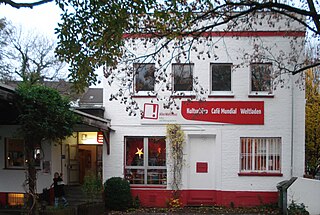 W
WThe AllerWeltHaus Hagen ; commonly shortened to AWH; is a Cultural center in the Dr. Ferdinand David Park in Hagen. It is located next to the Potthofstraße in Hagens downtown area, near the central Synagogue.
 W
WAlliance française or AF, is an international organization that aims to promote the French language and francophone culture around the world. Created in Paris on 21 July 1883 under the name Alliance française pour la propagation de la langue nationale dans les colonies et à l'étranger — now known simply as L'Alliance française — its primary concern is teaching French as a second language and is headquartered in Paris. In 2014, the Alliance has 850 centers in 137 countries, on each inhabited continent.
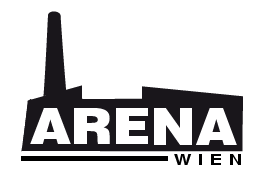 W
WArena is a cultural centre in Vienna, Austria. From its 1970s origins in an abandoned former slaughterhouse used for the Vienna Festival, the Arena grew into a centre for alternative culture. It is located at Baumgasse 80 in the Landstraße district.
 W
WAsian American university resource centers are designated physical spaces on American university campuses that support the Asian American student population. Some are housed within other university owned buildings, while others are entire separate buildings. Although their main function is to provide a gathering place for students, Asian American resource centers also provide other services, such as peer mentoring, mental health services, Asian American libraries, as well as promote cultural awareness to the campus community at large.
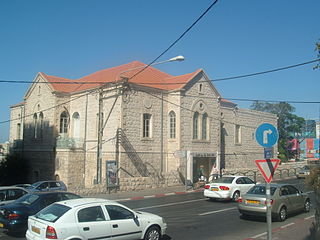 W
WBeit Ha'Gefen — The Arab-Jewish Cultural Center is a multi-cultural organisation that aims to bring together Arabs and Jews and promote coexistence and tolerance.
 W
WThe Bibliotheca Alexandrina is a major library and cultural center on the shore of the Mediterranean Sea in the Egyptian city of Alexandria. It is both a commemoration of the Library of Alexandria that was lost in antiquity, and an attempt to rekindle something of the brilliance that this earlier center of study and erudition represented. The idea of reviving the old library dates back to 1974, when a committee set up by Alexandria University selected a plot of land for its new library. Construction work began in 1995 and, after some US$220 million had been spent, the complex was officially inaugurated on 16 October 2002. In 2010, the library received a donation of 500,000 books from the Bibliothèque nationale de France (BnF). The gift makes the Bibliotheca Alexandrina the sixth-largest Francophone library in the world.
 W
WThe BIGZ building is a building located in Belgrade, the capital of Serbia. Designed by Dragiša Brašovan, it is one of the most representative architectural landmarks of Serbian modern architecture. A monumental building, with its position, volume and aesthetics, it dominates the entrance in the southern section of Belgrade.
 W
WThe Brazilian Cultural Center is an institution subordinated to the Brazilian diplomatic missions in each country, being the main instrument for the execution of the Brazilian cultural policy abroad.
 W
WBuen kulturhus is a cultural multi-purpose house located in the town of Mandal in the municipality of Lindesnes in Agder, Norway. The building opened in 2012 and includes a library, an art gallery, cinemas, halls adapted for theater, dance, concerts, and other events as well as a culture school.
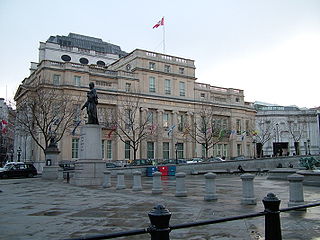 W
WCanada House is a Greek Revival building on Trafalgar Square in London. It has been a Grade II* Listed Building since 1970. It has served as the offices of the High Commission of Canada in the United Kingdom since 1925.
 W
WLa Casa Encendida is a social and cultural centre in central Madrid. It began operations in December 2002.
 W
WCasa Fernando Pessoa is a cultural center in Campo de Ourique of Lisbon, Portugal.
 W
WThe Centre Fraternal is a casino and cultural center placed in Palafrugell active since 1887. It is placed in a nineteenth-century building which, protected as Local Cultural Interest Heritage building.
 W
WThe Centro Cultural Gabriela Mistral (GAM) is a cultural center located on 227 Av. Libertador Bernardo O'Higgins, in Santiago de Chile. The complex was originally built to serve as the headquarters for the third UNCTAD conference, which was held in Santiago in 1972, and consisted of a convention center and an adjoining 22-stories building. The building was finished in only 275 days in a significant effort supported by several thousand volunteers. This effort was part of a major propaganda initiative performed by the socialist government of Salvador Allende, in power between the end of 1970 and September 1973 .After the conference, the building was used as a cultural center until the 1973 Chilean coup d'état. After the end of the Pinochet regime, it hosted a number of conventions and the adjacent tower became the main building for the Ministry of National Defense. In early 2006, a fire destroyed parts of the building, which led the government of Michelle Bachelet to rethink the original sense of the building and return it into a cultural center, open to the public. Adapting the structure of its urban environment, the building takes on the concept of transparency and many artworks from the original design. The second phase that contains an auditorium with space for more than 2000 is going to start soon.
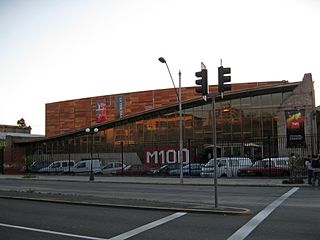 W
WThe Centro Cultural Matucana 100 is a cultural center located in the commune of Estación Central in Santiago, Chile, near Quinta Normal Park. Matucana 100 is a not-for-profit corporation that hosts and plans cultural events and educational programs related to the contemporary arts including dance, theatre, music, photography, the visual arts and cinema. The center takes its name from its street address.
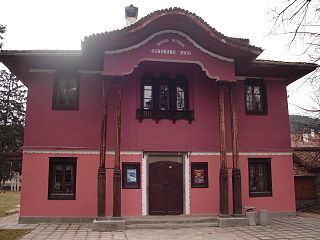 W
WA chitalishte is a typical Bulgarian public institution and building that fulfills several functions at once, such as a community centre, library, and a theatre. It is also used as an educational institution, where people of all ages can enroll in foreign language, dance, music and other courses. In this function they could be compared to the folk high schools of Northern Europe. Some larger urban chitalishta are comparable to 92nd Street Y in New York City.
 W
WThe Cultural Center of the Philippines Complex, also known as the CCP Complex, is an 88-hectare (220-acre) reclaimed property owned by the Cultural Center of the Philippines (CCP) located along Roxas Boulevard in Metro Manila, the Philippines. It is a mixed-use cultural and tourism hub overlooking the Manila Bay in south-central Manila, most of which fall under the jurisdiction of the city of Pasay.
 W
WThe Belém Cultural Center, is a complex of artistic venues located in Belém in the city of Lisbon. It is the largest building with cultural facilities in Portugal, with over 140,000 m2 of usable space. The centre was initially built to accommodate the programme of Portugal's Presidency of the European Council in 1992, but with the long-term goal of providing permanent venues for conferences, exhibitions and performance arts, in addition to meeting halls, shops and cafés.
 W
WCulture Factory Polymer was a multidisciplinary centre for artistic creation and diffusion in Tallinn, Estonia. Located in Lilleküla, Kristiine District, on the fringes of the Tallinn city centre, this former toy factory became in 2003 one of the main strong points for alternative un-institutionalized culture in Tallinn.
 W
WCulture Palace of Abidjan is a temple of culture in Abidjan, Ivory Coast.
 W
WThe DRU Cultuurfabriek is the most important cultural centre of the municipality Oude IJsselstreek in the east of the Netherlands. The 'culture factory' in the northeast of the village Ulft is situated by the river Oude IJssel, Netherlands.
 W
WFinn halls or Finnish halls were cultural centers of Finnish diaspora communities and labor organizations in the United States and Canada.
 W
WThe Finnish Institute in France, Institut finlandais, is an independent and multidisciplinary platform between Finland and France. The institute was opened in 1990 at 60 Rue des Écoles, in the heart of the Quartier Latin in the 5th arrondissement in Paris.
 W
WFundação Fernando Leite Couto, Portuguese for "Foundation Fernando Leite Couto", is a foundation and cultural centre in Mozambique's capital Maputo. It was founded in 2015 and is named after the Portuguese-Mozambican writer Fernando Leite Counto. The foundation has its seat in a building developed by Pancho Guedes at Avenida Kim Il Sung 961 in the Sommerschield neighbourhood.
 W
WGorbunov Palace of Culture is a palace of culture and a popular concert hall in the west of Moscow, best known for rock concerts and live records by various bands. The building was constructed in the style of constructivism in 1929–1938. The palace is named after aircraft design engineer Sergey Gorbunov.
 W
WThe Grande halle de la Villette, formerly a slaughterhouse and now a cultural center, is located in Paris, France. It is situated on Place de la Fontaine aux Lions within the Parc de la Villette, in the 19th arrondissement. While the Grande Halle is within Paris' main abattoir district, the historical building now serves as a venue for trade fairs, exhibitions, music festivals, and open-air cinema.
 W
WHackerspace.gr ('hsgr') is a hackerspace in Athens, Greece, established in 2011. It operates as a cultural center, computer laboratory and meeting place. Hackerspace.gr promotes creative coding and hardware hacking through its variety of activities. According to its website: "Hackerspace.gr is a physical space dedicated to creative code and hardware hacking, in Athens".
 W
WHouse of Culture is a cultural center situated to the south of Sergels torg in central Stockholm, Sweden. The House of Culture has been described as a symbol for Stockholm as well as of the growth of modernism in Sweden.
 W
WA House of Officers, sometimes officially referred to as the Central House of Officers or Officer Houses, is a military and cultural institution originating in the Soviet Army and living on today in the Russian Armed Forces and the militaries of many Post-Soviet states. Being the Russian/Soviet equivalent to military officers' clubs in the United States, it effectively serves as cultural center serving to represent the military and to improve civil–military relations. It can be an independent formation in the national defence ministry or a public entity like a club-houses. In the early days of the Soviet Union the institution was called the House of the Red Army. The head of the building is a senior officer, usually with the rank of a Major or above.
 W
WThe Howland Cultural Center, formerly known as Howland Library, is located on Main Street in Beacon, New York, United States. It is an ornate brick building designed by Richard Morris Hunt in the 1870s. In 1973 it was listed on the National Register of Historic Places.
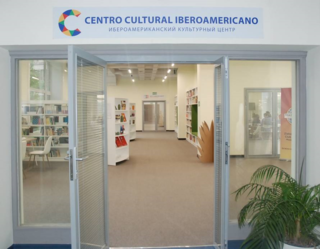 W
WThe Ibero-American Cultural Centre is a cultural and educational institution founded on 21 May 2019 and developed with the support of the Russian Ministry of Culture and Ibero-American embassies, with the aim of promoting Ibero-American culture and languages. The center is part of Margarita Rudomino All-Russia State Library for Foreign Literature and has its own books fond, consisting in books in Spanish, Portuguese, Catalan, Galician and Russian.
 W
WThe Institut Tessin, also known as the Centre Culturel Suédois, is a museum in Paris dedicated to the history of Franco-Swedish artistic exchanges. It is located in the Hôtel de Marle at 11, rue Payenne in the city's 3rd arrondissement, and is open weekdays except Monday; admission is free.
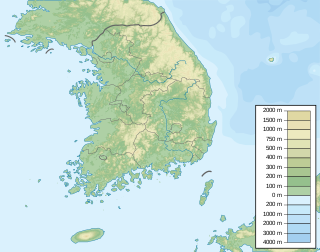 W
WThe Jeju Islamic Cultural Center or Jeju Islamic Center is an Islamic cultural center in Nohyeong, Jeju City, Jeju Province, South Korea.
 W
WKaunas Cultural Centre of Various Nations is a cultural and educational institution intended to preserve the cultural identities of national minorities and encourage their positive integration into the Lithuanian society. The institution promotes international and national tolerance and strives to develop civil society.
 W
WA kominkan , or citizens' public hall, is a kind of Japanese cultural center. Kominkan provide structured learning programs in arts, sport, handiwork and cultural activities, to children, youth and aged people. They are generally funded and administered by local governments.
 W
WThe Königsberg Stock Exchange was a stock exchange in Königsberg, Germany. One of the few buildings from central Königsberg to survive World War II, it is now a cultural centre in Kaliningrad, Russia.
 W
WThe Kulturzentrum Schlachthof in Wiesbaden, Hesse, Germany, is a cultural center in a complex which formerly housed the municipal slaughterhouse, approximately 500 meters southeast of the Wiesbaden Hauptbahnhof railway station. The cultural center, known as Schlachthof, was founded in 1994. It offers two concert halls for events from 300 to 2,000 people; the large concert hall has an area of about 1,200 square meters. The location is used for concert in rock, metal and punk, for music parties, poetry slams and readings. It is surrounded by a leisure park.
 W
WMetelkova is an autonomous social and cultural centre in the city centre of Ljubljana, Slovenia's capital city. Formerly, the site was the military headquarters of the Army of the Austro-Hungarian Empire, then it became the Slovenian headquarter of the Yugoslav National Army. It consists of seven buildings extended over a total area of 12,500 m², which have been squatted since September 1993. The squat is named after nearby Metelko Street, which is named after the 19th-century Slovenian Roman Catholic priest, philologist, and unsuccessful language reformer Fran Metelko.
 W
WNazrul Tirtha is a cultural and educational center dedicated to the rebel poet Kazi Nazrul Islam. The center is situated in Action Area - I of New Town, Kolkata. It is only 2.50 kilometers away from Rabindra Tirtha. West Bengal Chief Minister Mamata Banerjee inaugurated the center on 24 May 2014 to mark the occasion of the 115th birth anniversary of the poet.
 W
WThe Ngarachamayong Culture Center is a cultural center in Koror, Palau.
 W
WHet Nieuwe Instituut is a cultural centre in Rotterdam, the Netherlands. It focuses on architecture, design, and digital culture. HNI is in a building designed by Jo Coenen at Museumpark 25 in the centre of Rotterdam, adjacent to the Museum Boijmans Van Beuningen. The building contains a shop, exhibition space, study centre, and archive, as well as the Sonneveld House, a pond, and a small park.
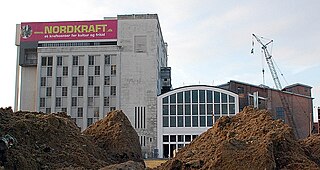 W
WNordkraft is a cultural centre in the Danish city of Aalborg. Opened in 2009, it is located in a former electricity generating station close to the waterfront in an area designated for cultural development. Neighbouring buildings include the Utzon Center and Musikkens Hus. Nordkraft is home to several cultural institutions including Skråen, a venue for jazz and rock concerts, Teater Nordkraft, the Biffen Art Cinema, the Kunsthal Nord art gallery and Dreamhouse, an innovative creation facility. It also has a multipurpose hall with seating for up to 1,500.
 W
WPalace of Culture or House of Culture was the name for major club-houses in the Soviet Union and the rest of the Eastern bloc.
 W
WThe Peter Friedrich Ludwig Hospital is cultural centre and former hospital in the city of Oldenburg, Lower Saxony, Germany.
 W
WPoligon Creative Centre was creative centre in Slovenia and the first and largest coworking space in Slovenia. It was a training ground for creative communities and self-employed operating in the field of creative economies, social entrepreneurship and culture in Ljubljana, Slovenia, and it was placed inside the former tobacco factory, Tobačna Ljubljana. The Slovenia Crowdfunding Initiative was based out of the center.
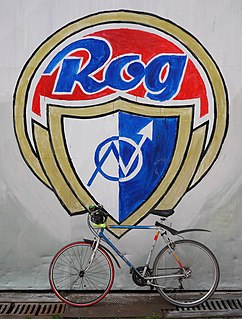 W
WRog Autonomous Factory, known as Rog, was a squatted bicycle factory in Ljubljana. It was used as a cultural centre and self-managed social centre from 2006 until 2021. The complex housed a music venue, a skate park, a medical clinic for asylum seekers, a football pitch and artist ateliers. After years of debate over its future, the centre was evicted by the city council in January 2021.
 W
WThe Sheikh Jaber Al-Ahmad Cultural Centre (JACC), informally known as the Kuwait Opera House, is a prominent cultural center in Kuwait, located on the Gulf Road in the capital Kuwait City. It is the largest cultural center and opera house in the Middle East. The cultural centre is part of the new Kuwait National Cultural District.
 W
WThe Sheikh Mohammed Centre for Cultural Understanding is a non-profit organisation which promotes awareness of Emirati culture, customs, traditions and religion among expatriates and foreign visitors in the United Arab Emirates, as well as aiming to remove cultural barriers.
 W
WSoyuzivka Heritage Center, also known as Soyuzivka, Suzi-Q, or the Q, is a Ukrainian cultural center located in the hamlet of Kerhonkson, New York in Ulster County, in the Shawangunk Ridge area south of the Catskill Mountains in upstate New York. Soyuzivka hosts children's heritage camps, Ukrainian dance camps, workshops, seminars, festivals, concerts, dance recitals and art exhibits for those interested in learning about Ukraine and its culture.
 W
WThe Swedish Cultural Center is a meeting spot for Scandinavians in Seattle, Washington. It was founded in 1892, initially as the Swedish Club and is sometimes still known under that name.
 W
WTaman Budaya Yogyakarta is a place of cultural development center in Yogyakarta, Indonesia. TBY complex consists of two buildings namely the Taman Budaya Concert Hall and Societet Militair Building. The Concert Hall main functions as official room for fine art exhibition, such as painting, visual art, sculpture, and craft.
 W
WTrans Europe Halles (TEH) is a European-based network of cultural centres initiated by citizens and artists.
 W
WThe State Cultural Centre of Turkmenistan is a multipurpose performance facility in the Ashgabat, Turkmenistan. Located at Archabil avenue, it was founded by the first President of Turkmenistan Saparmurat Niyazov. It is a place for a wide variety of cultural performances. It was opened in 2007. In the past, bore the name of Saparmurat Turkmenbashi the Great.
 W
W